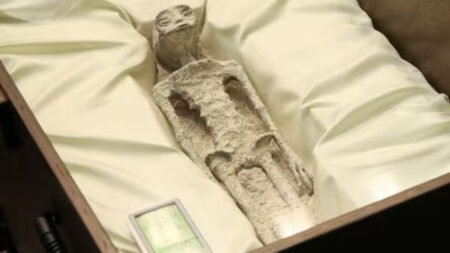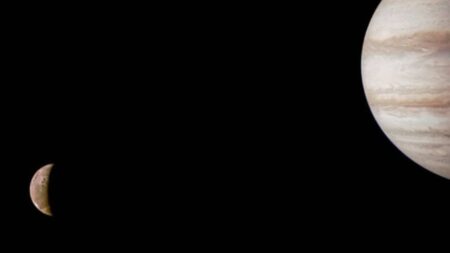The Hubble Space Telescope, operated jointly by NASA and the European Space Agency (ESA), has recently captured remarkable images of space debris resulting from a daring NASA mission. In a groundbreaking experiment called the Double Asteroid Redirection Test (DART), a 600-kilogram spacecraft intentionally crashed into the asteroid Dimorphos, which orbits a giant asteroid named Didymos. The mission aimed to assess the feasibility of altering an asteroid’s trajectory to prepare for future efforts to divert potentially hazardous space rocks away from Earth. The DART mission was carried out successfully in September 2022, and its impact on Dimorphos reduced the asteroid’s orbit duration by approximately 33 minutes.

Probing the Aftermath of the Impact
Following the impact, scientists used the Hubble Space Telescope to closely examine the debris expelled by the collision. The telescope’s exceptional sensitivity allowed it to capture images of 37 large boulders, ranging from one to nearly seven meters across. These boulders, seen as tiny sparkles of light in the photos, were likely originally attached loosely to Dimorphos’ surface and were shaken off by the force of the impact.
Slow Drift in Space
Interestingly, the boulders appear to be moving slowly relative to Dimorphos, drifting away from the asteroid at about 0.8 kilometres per hour. Despite their size and violent impact, these rocks pose no threat to Earth. Their slow movement allows scientists from the upcoming European Space Agency’s Hera mission, set to reach the asteroid in 2026, to observe and study them closely.
Insights into Asteroid Behavior
Using the Hubble Space Telescope, scientists discovered 37 large boulders ranging from 1 to 7 meters across, likely expelled by the collision. The boulders were marvellously tied to Dimorphos’ surface, offering fascinating insights into the impact’s aftermath. The findings from the Hubble observations provide valuable insights into the behaviour of a small asteroid when struck by a spacecraft. The slow dispersal of the boulders indicates that the DART mission likely left a crater approximately 50 meters wide on Dimorphos, a significant impact considering the asteroid’s size of 170 meters across
A Unique Observation
David Jewitt, a planetary scientist at the University of California, Los Angeles, and lead author of the study, compared the drifting boulders to a “very slowly expanding swarm of bees.” The Hubble’s capability to capture these faint objects marks a significant advancement in space observation.

The discovery also has implications for future missions aimed at diverting life-threatening asteroids that could pose a threat to Earth. Such tasks could also lead to the release of boulders, though the observed ones do not present any danger to our planet.
Implications for Future Missions:
The discovery has implications for future missions aimed at diverting life-threatening asteroids. Such endeavours could also result in the release of boulders, but the observed ones pose no danger to Earth.
In conclusion, the Hubble Space Telescope’s images of the asteroid Dimorphos and its boulders provide valuable insights into the impact of the DART mission. The successful observation marks a milestone in our understanding of space debris resulting from asteroid collisions and contributes to ongoing efforts to protect Earth from potential asteroid threats. With the Hera mission’s arrival in 2026, scientists eagerly anticipate further discoveries and a deeper understanding of these celestial bodies.
NASA’s DART mission and the subsequent Hubble Space Telescope observations of the asteroid Dimorphos have provided crucial insights into the behaviour of space debris resulting from asteroid impacts. The successful test of asteroid redirection paves the way for future efforts to protect our planet from potential asteroid threats. With advancements in space technology and continuous scientific exploration, humanity takes significant strides in understanding and safeguarding our cosmic neighbourhood.













